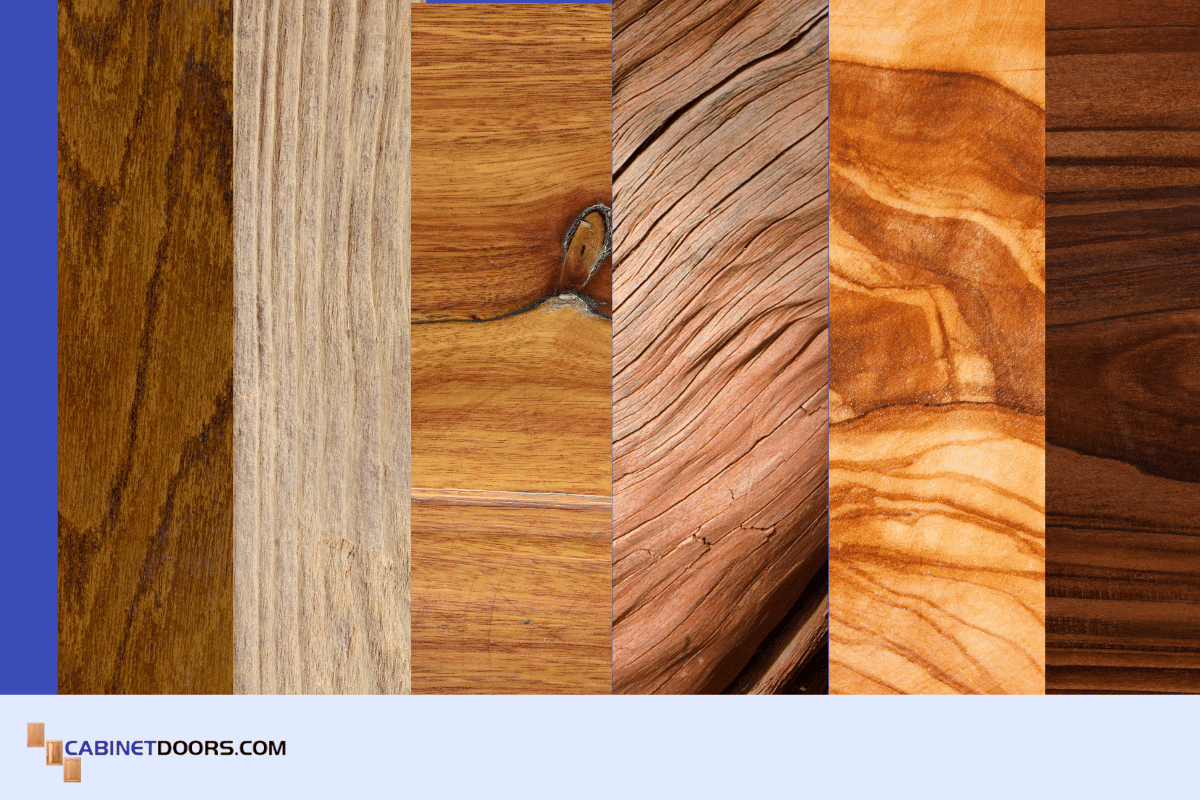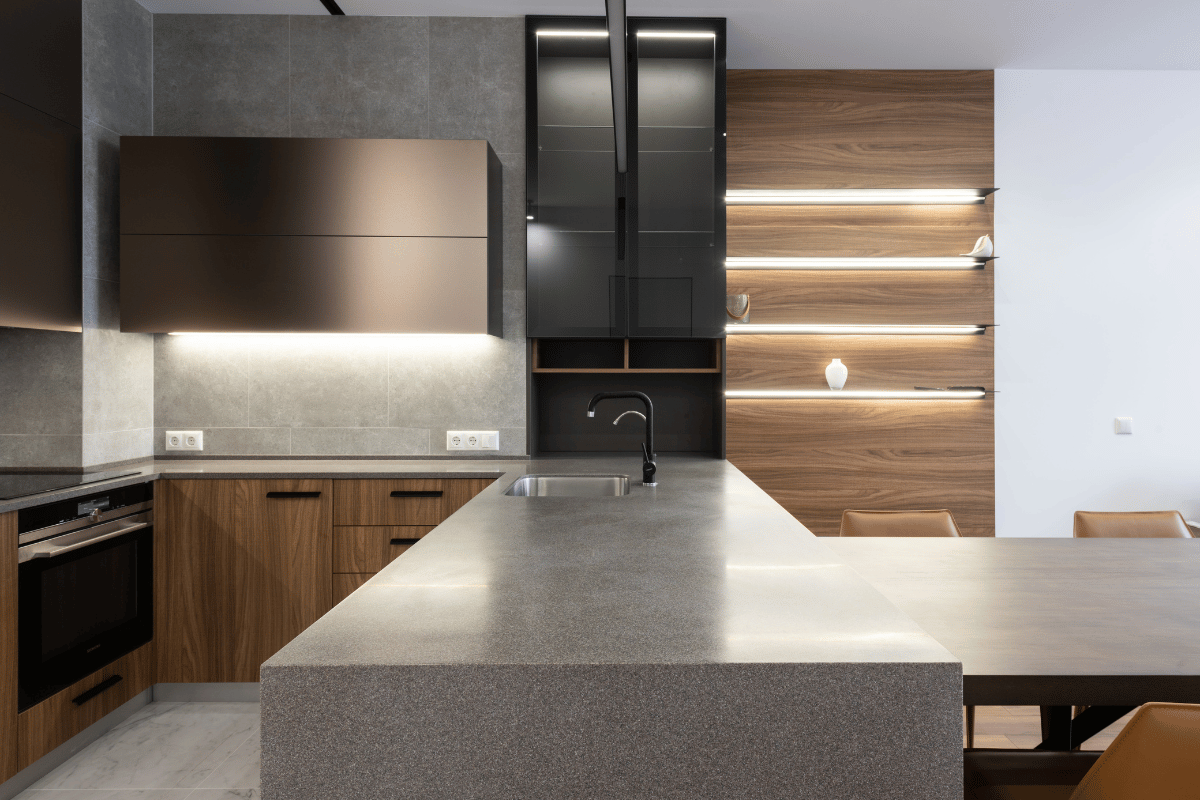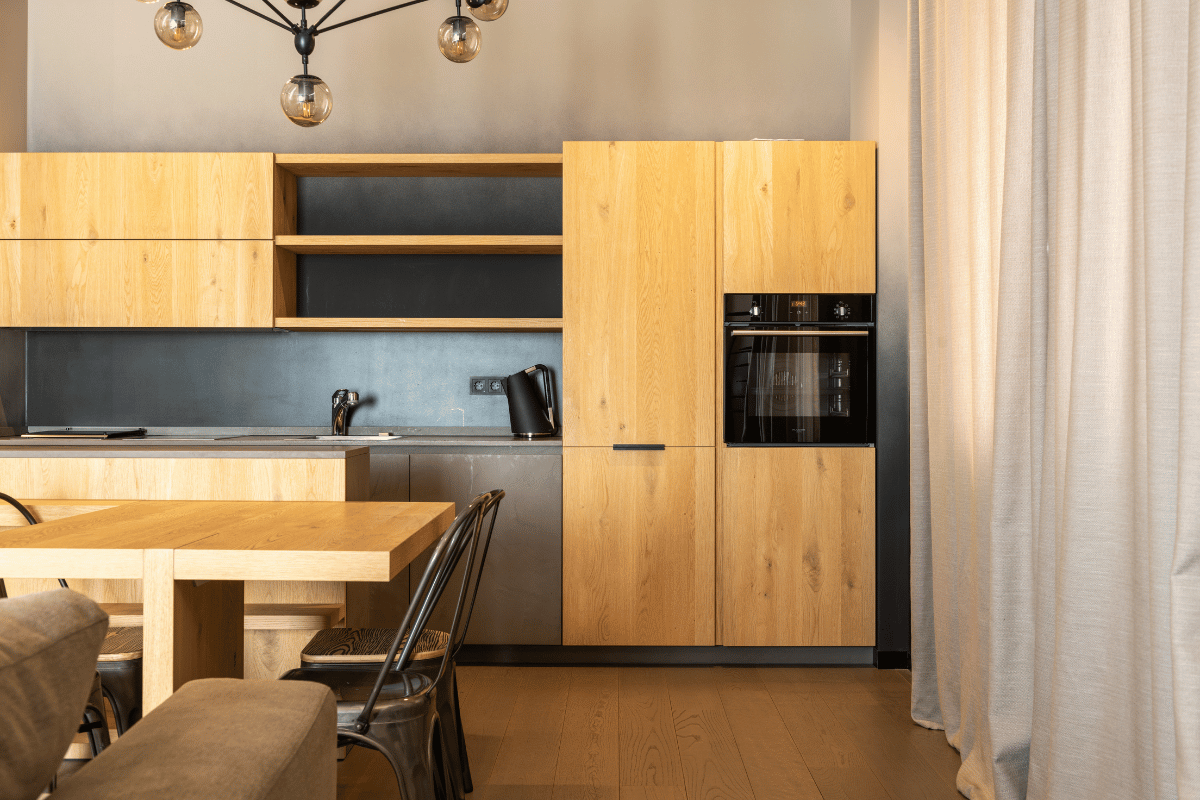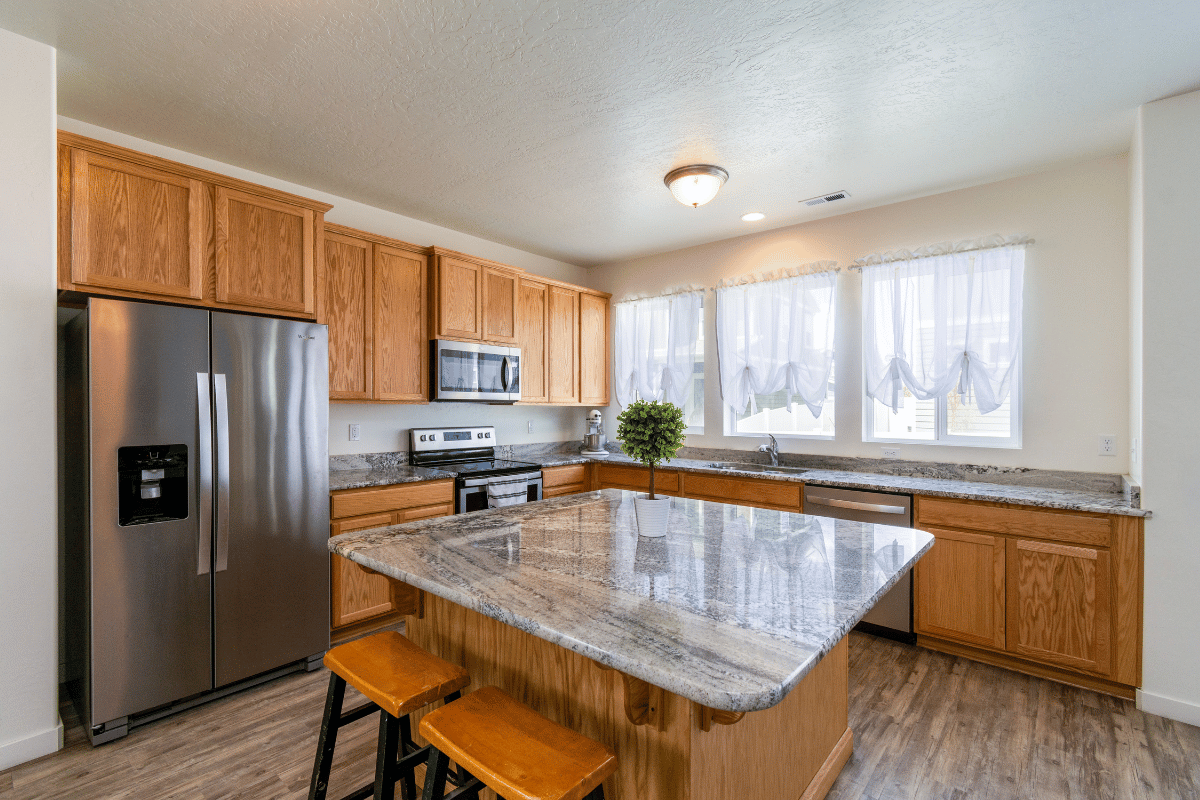Why Consider Wood Grain Pattern for Cabinet Doors?
Posted by Donovan Thornhill on Nov 10th 2023

When shopping for new custom kitchen cabinet doors, the two most important factors are the wood type and the style. The most common wood types for cabinet doors include Alder, Cherry, and Knotty Oak. Not only do these wood types have different colors and durability, but they also have their own unique wood grain. Paying attention to the wood grain pattern will ensure you find the perfect fit for the vision you have for your kitchen design.
In this blog, we'll discuss the importance of grain patterns and how different wood grain textures differ so you can find the perfect match for your kitchen.
What is Wood Grain?
Wood grain refers to the natural pattern and texture of the wood species. The pattern can vary from wood to wood and also differ depending on the cut of the wood. Whether it is a smooth or coarse wood texture, each pattern can add dimension to your space and elevate the natural beauty of the wood type.
The wood grain plays a key role in the overall design of your kitchen. While adding a finish can change the color of the wood, it can't eliminate the wood grain. So you'll want to weigh the pros and cons of the different types of patterns to ensure you find one that complements your unique tastes.
How Types of Grain Differ
No two grains are the same. Some woods have more defined lines, while others have knots and growth rings. Here's how these key differences vary.
Knots
Knots are small circles on the wood that show where branches and buds used to exist on the tree. There are various types of knots. This includes small, pin, and cluster knots. There is also a variety of wood species that are considered to be knotty wood types. The placement of the knots may vary, and so will how prominent they are.
Growth Rings
Growth rings are circles ingrained into the wood grain. These circles often represent the tree's age and can be a key indicator of the wood's durability. Growth rings can be great for vintage or rustic-style kitchen designs. If your kitchen cabinet doors have growth rings, they likely are accompanied by knots.
Wood Texture
Wood texture can vary from smooth to coarse. Wood types like oak and pine tend to have a coarse texture, while woods like cherry are known to be smooth. Smooth wood textures are a better choice if you'd like to keep things more sleek and modern. While coarse texture is preferred for rustic and vintage kitchen designers.
Grain Pattern
The grain pattern is determined by the cut of the wood and the wood species. The most common cuts are plain-sawn, quarter-sawn, or rift-sawn. Rift-cut wood tends to be more expensive, while quarter-sawn and plain-sawn are affordable alternatives with a similar look and feel.
Wood Species with Strong Grain Patterns
If you like the look of the grain pattern and want to enhance its beauty in your kitchen or bathroom, there are a variety of wood types to consider.
Here are our top three choices for kitchen cabinet doors:
Oak
Oak is one of the most popular wood types with a specific grain pattern. It comes in two distinct types: White and Red Oak. There is also a knotty oak that features more knots and growth rings. Oak is known for having a tighter, thinner grain pattern. It's soft yet distinct, perfect for various kitchen designs, including modern, minimalist, and traditional.
Cherry
If you're looking for something more subtle, cherry is the wood type for you. Cherry has a soft, wavy grain pattern that can be enhanced with different wood stains. When paired with the natural reddish-brown color of the wood, you'll get a stunning, warm color that looks great in vintage and traditional kitchens.
Hickory
Hickory is known and loved for its durability, coming in at 1820 on the Janka scale. It also has a gorgeous wood grain with contrasting light and dark streaks. The grain pattern is straight and will sometimes feature sections with tightly packed grains.
The Difference Between Horizontal Grain and Vertical Grain
You'll hear tons about horizontal and vertical grains when exploring different wood types for kitchen cabinet doors. Both types of grain have a prominent appearance and key differences you'll want to consider to ensure you find a wood species that complement your vision for your kitchen.
Vertical Grain
Vertical grain is also known as edge grain or quarter-sawn. This is when the grain pattern and growth rings run vertically down the middle of the wide part of the wood. While the vertical grains may be more consistent than the horizontal, they aren't as defined.
Horizontal Grain
Horizontal grain is also known as flat grain or plain-sawn grain. This is when the growth rings and pattern runs horizontally with the wide part of the board. The appearance of the grain is more prominent than vertical grains. It also tends to have more growth rings and knots.
Grain Match vs. Non-Grain Match for Kitchen Design
Once you understand the importance of the grain of wood, it's time to start designing your dream kitchen. The two most popular ways to use the wood pattern in your space are a grain match and a non-grain match.
Here's how they differ:
Grain Match
Grain match is when there is a cohesive look from cabinet door to cabinet door. Whether it's horizontal or vertical, the grain pattern will always move in the same direction. This popular option is ideal for modern and contemporary kitchens with a cohesive look.

In this example, the cabinets on the right have a similar grain pattern that moves horizontally. While the bottom cabinets have a grain pattern that moves vertically. Even though the cabinet grain patterns move in different directions, they still match. This helps create a cohesive, modern look.

In this grain match example, everything aligns perfectly, including the knots and growth rings that break in half between two cabinets.
Non-Grain Match
Non-grain match is a more affordable way to add depth and dimension to the space. With this approach, all your cabinet doors are likely the same wood type and color. However, the grain patterns will vary. This means some cabinets may have more knots and growth rings while others have a dense grain pattern.

This is an example of a traditional kitchen with non-grain-match cabinet doors. While it may look cohesive at first glance, when you look closer, you can tell that some cabinet doors don't match the others.

This traditional kitchen has dark cherry cabinet doors. If you look closely, you can tell that the grain pattern varies. Some doors have more knots, while others have a smoother texture.
Explore Different Wood Grain Patterns With CabinetDoors.com
At CabinetDoors.com, we have over 11 different wood types to choose from. Each wood type has its own distinct texture and grain pattern. All our natural wood options are also available with or without a clear finish, so you can add your own stain at home before installing. When you choose to shop with us over big box retailers, you'll save on high-quality custom cabinet doors and find innovative ways to elevate your space with the beauty of natural wood.
Explore our selection of custom cabinet doors.


